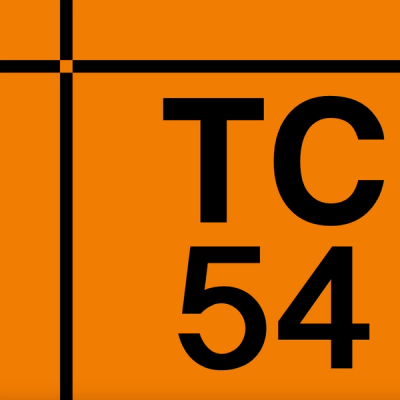🌅
mui-image
The only Material-UI image component to satisfy the Material guidelines for loading images.


Demo Playground ↗️
If you're already using Material-UI v5, why not display your images according to the Material guidelines too?
Illustrations and photographs may load and transition in three phases at staggered durations, rather than relying on opacity changes alone.
Visualize the image fading in, like a print during the photo development process.
- Material guidelines
1. Install
npm i mui-image
or
yarn add mui-image
Using TypeScript? Also add @types/mui-image 🥳
2. Use
import Image from 'mui-image'
// or
import { Image } from 'mui-image'
// then
<Image src="my-image.png" />
3. Profit 💰
Note: Profits not guaranteed and MUI v5 is a peer dependency. If you need to support legacy versions of Material-UI, use material-ui-image instead. See the comparison chart below for more.
Usage Examples
You can use mui-image like a regular image.
<Image src="my-image.png" />
Except... it will fade and animate in as the Material guidelines recommend. 🤯
Add a height and/or width to reserve space on the page for the image and avoid uncomforable content shifts as your picture loads. They both default to 100% of the parent you place them in and accept any valid CSS property. Numbers are converted to pixels.
<Image src="my-image.png" width={500} />
<Image src="my-image.png" height="90vh" />
Apply the showLoading prop to add a progress indicator to let your fans know something amazing is coming. You can use the default MUI indicator or bring your own. 😎
<Image src="my-image.png" showLoading />
<Image src="my-image.bmp" showLoading={<MyCustomSpinner />} />
If you want the image to fail silently you can disable the errorIcon, or you can add your own to suit your brand.
<Image src="my-cats.png" errorIcon={null} />
<Image src="my-dogs.png" errorIcon={<MyErrorIcon />} />
If you want to disobey Google 😵 then you can customise the animation and speed via the duration and easing props to any valid CSS property. Duration is always milliseconds.
<Image src="my-fish.png" duration={325} />
<Image src="my-bird.jpg" easing="ease-in-out" />
To add that extra bit of spice 🌶 you can do exactly what Google suggests and apply a small position shift to images as they appear. The direction, distance, and duration (in milliseconds) are up to you.
<Image src="my-lawd.png" shift="left" />
<Image src="my-gawd.jpg" shift="bottom" distance={300} />
<Image src="my-gosh.gif" shift="top" distance="2rem" shiftDuration={320} />
And of course, you can style mui-image like you would a regular image... but with the addition of the MUI v5 sx prop and all the benefits it brings. 😏
<Image src="my-self.jpeg" style={{ borderRadius: 16 }} />
<Image src="my-wife.webp" className="custom-class" />
<Image src="my-exgf.tiff" sx={{ display: { sm: 'none', lg: 'inline' }}} />
If you want to get fancy 💃 you can also add inline styles and additional className's to the root wrapper div and loading/error icon wrapper div, or just target their default className's. This allows for complete customisation of every aspect of the component.
Like and subscribe below for more. ⏬
Props
| Name | Type | Default | Description |
|---|
| alt | string | "" | image alt tag value |
| bgColor | string | "inherit" | the color the image transitions in from |
| className | string | "mui-image-img" | CSS class for the image |
| distance | string / number | 100 | any valid CSS length value (for the shift) |
| duration | number | 3000 | sets the CSS transition-duration in milliseconds |
| easing | string | cubic-bezier(0.7, 0, 0.6, 1) | sets the CSS transition-timing-function |
| errorIcon | boolean / node | true | display default error icon, or your own |
| fit | string | "contain" | any valid CSS object-fit value |
| height | number / string | "100%" | any valid CSS height value |
| iconWrapperClassName | string | "mui-image-iconWrapper" | CSS class for the icon wrapper div |
| iconWrapperStyle | object | | inline styles for the icon wrapper div |
| position | string | "relative" | any valid CSS position value |
| shift | boolean / string | false | either "left", "right", "top", "bottom", null, or false |
| shiftDuration | number | duration * 0.3 | duration of shift in milliseconds |
| showLoading | boolean / node | false | display default loading spinner, or your own |
| src * | string | | image src tag... required |
| style | object | | inline styles for the image |
| width | number / string | "100%" | any valid CSS width value |
| wrapperClassName | string | "mui-image-wrapper" | CSS class for the root wrapper div |
| wrapperStyle | object | | inline styles for the root wrapper div |
* required prop
Any other props (eg. sx, onLoad) are passed directly to the native img element.
Material guidelines for loading images
✅ Fade-in
Visualize the image fading in, like a print during the photo development process.
✅ Opacity, exposure, and saturation recommendations
Images should begin loading with low contrast levels and desaturated color. Once image opacity reaches 100%, display the image with full-color saturation.
✅ Duration
A longer duration is recommended for loading images, and a shorter duration is recommended for transitions.
✅ Animation
Add a small position shift to loading images.
(Source)
Comparison with similar components
| Feature | mui-image | material-ui-image |
|---|
| Size (minzipped) |  |  |
| Supports MUI v5 | ✅ | ❌ |
| Fade-in | ✅ | ✅ |
| Progressive level adjustments | ✅ | ❌ |
| Suggested duration | ✅ | ✅ |
| Optional shift animation | ✅ | ❌ |
| Supports legacy MUI versions | ❌ | ✅ |
License
© benmneb
ISC License
Permission to use, copy, modify, and/or distribute this software for any
purpose with or without fee is hereby granted, provided that the above
copyright notice and this permission notice appear in all copies.







